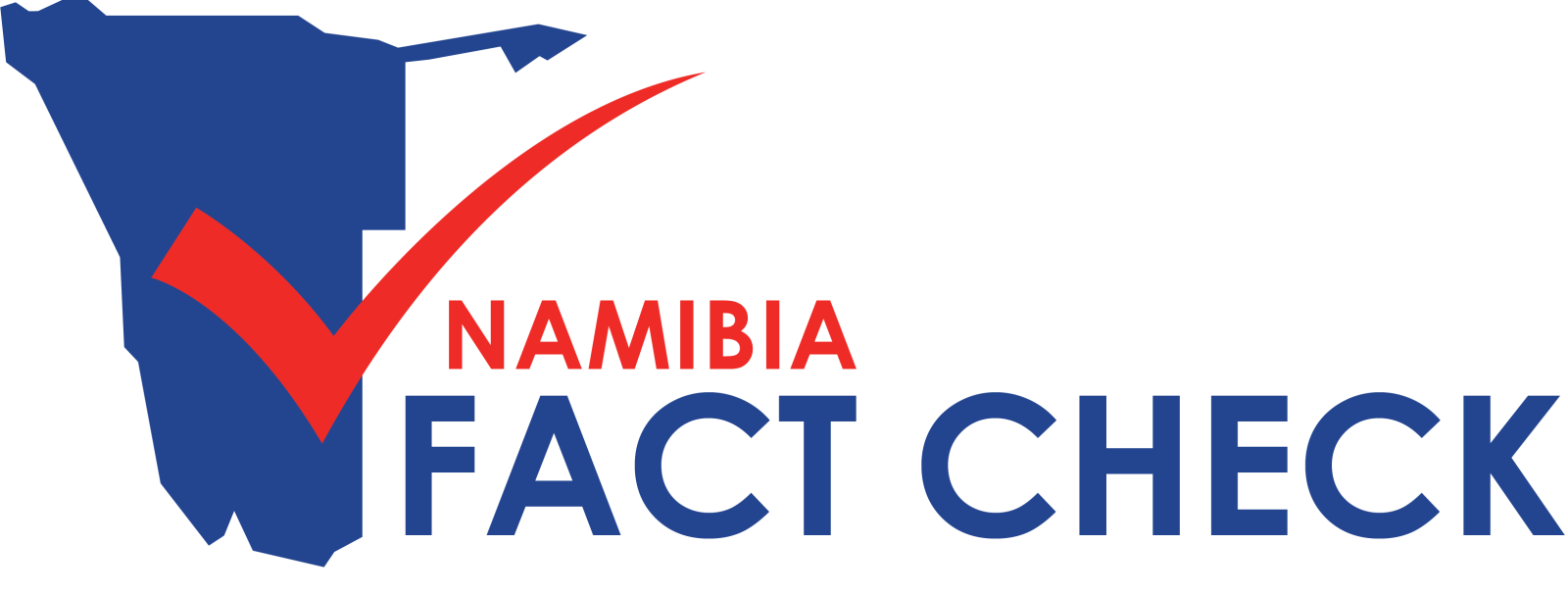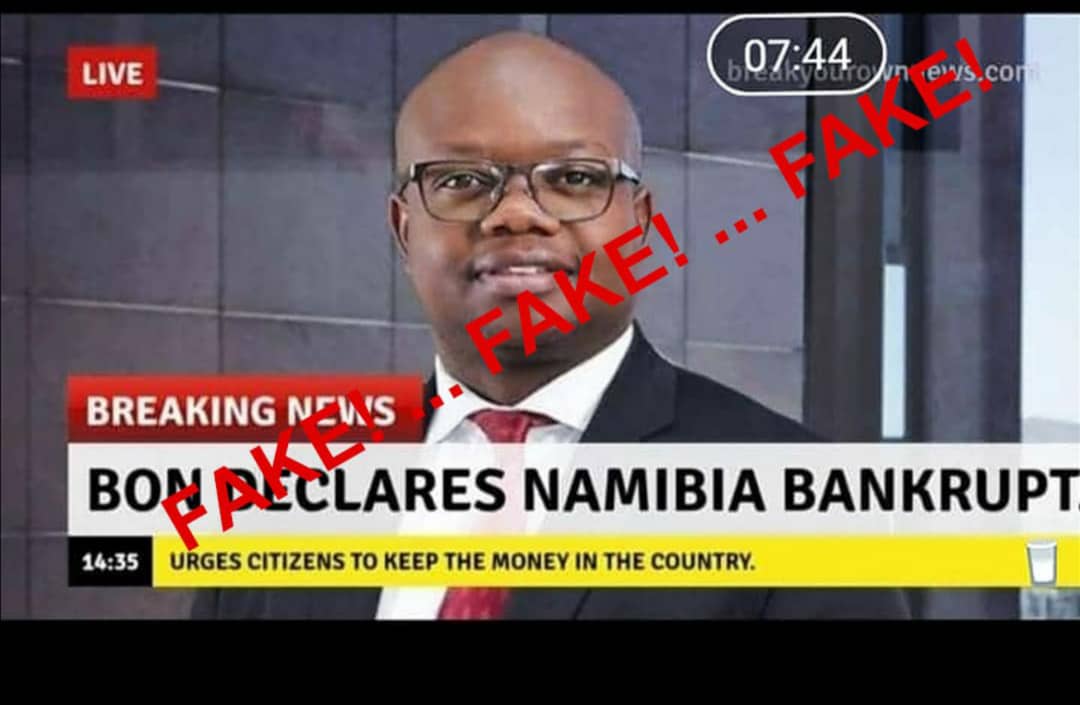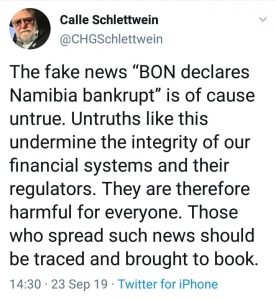Some panic and alarm appears to have been caused on Monday, 23 September 2019, when a faked image appeared on Namibian social media and was widely shared.
The image, of Bank of Namibia (BON) deputy director of corporate communications Kazembire Zemburuka, bore the headline ‘BON declares Namibia bankrupt’ and was subtitled ‘Urges citizens to keep the money in the country’.
The image is clearly altered and fake.
As the day wore on, and the extent of confusion seemingly caused by the fake image spread, the BON responded by spreading a version of the image with ‘Fake!’ stamped across it. The BON version was also circulated through Namibian social media in an attempt to try and counter the false image through the same channels it had gone viral. (The featured image on this article is the BON version of the fake photo)
By the Monday afternoon the image was still the subject of conversation and some people still thought it was real, some even calling Namibia Fact Check to ask if what the image stated was true.
On the afternoon of the Monday, Namibian finance minister Calle Schlettwein, in response to the circulating false image, stated on Twitter:
But even as various authorities were attempting to put out the flames on one instance of false information, on the same day, the following image also started making the rounds on Namibian social media:
And then on Tuesday, 24 September 2019, the following image also started circulating on Namibian social media:
While it’s unclear whether these images are the handiwork of the same person or persons, all three images were created using an online meme generator, Breakyourownnews (image below), that allows users to generate memes for social media that look like broadcast footage still images.
Why the first image – captioned ‘BON declares Namibia bankrupt’ – appears to have gone viral and caused some measure of confusion seems to be because it tapped into fears and dissatisfaction concerning Namibia’s economic performance, with the country caught in a prolonged and devastating economic slump since mid-2016.
There were obvious signs from the beginning that the image was fake:
- The absence of a logo of a broadcaster;
- The fact that it had breakyourownnews.com watermarked in the top right corner.
Aside from the above, in the other images there are also obvious tell-tale signs of fakeness:
- Obvious spelling and grammatical errors (such as spelling Chinese as “Chinesse”);
- Exaggerated emphasis by using multiple exclamation marks (‘We don’t need youth votes!!!‘).
Also look out for:
- Whether there is a website linked to or accompanying the posted or shared image;
- If there is, click through to the website and see what it is;
- Usually social media image posts by credible news organisations are accompanied by brief descriptive or introductory texts.
So when similar images appear again on social media, stop, think and check them before sharing them. And if they bear the signs of being fake, DO NOT share them.





